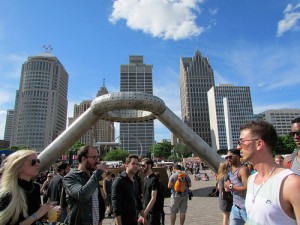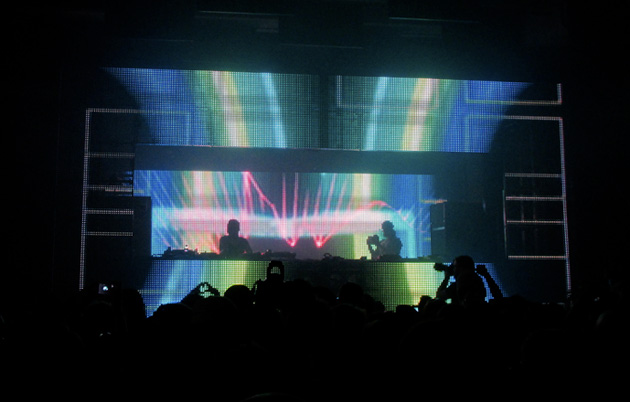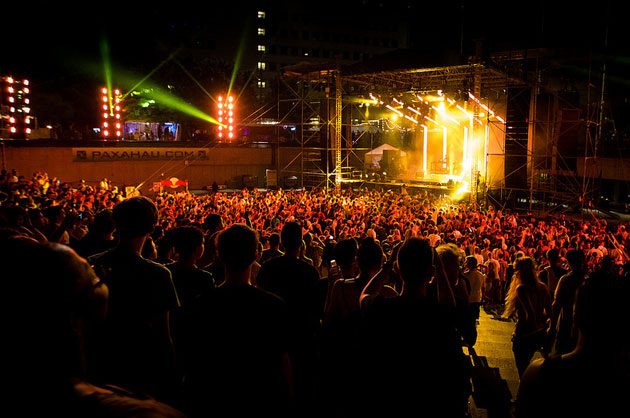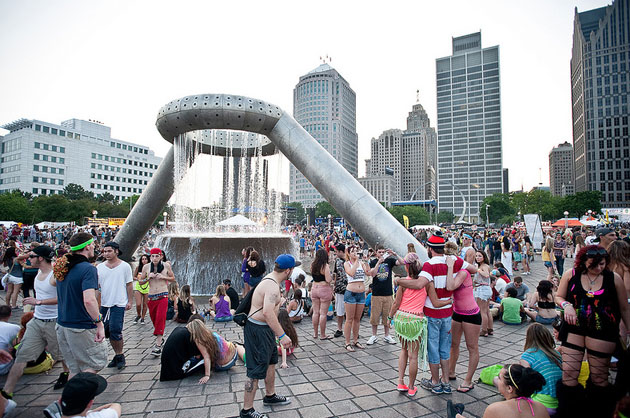 When mentioning how I planned to spend my Memorial Day weekend to friends and family, there are few cities in the world that elicit quite the same response as when Detroit is mentioned as your target destination. Those who know automatically get it, but those who don’t, simply haven’t a clue. See, for most, references to Detroit conjure forth images of a dying American city, whose deleterious decline came about as a result of the near collapse of the United States’ automotive industry. A place where boulevards wide enough to accommodate a Cadillac in every one of it’s 6 lanes lay as empty as the 40 floor high skyscrapers -built of art deco majesty- that proudly stand beside them. While the picture before you is no lie, it makes up but one half of Detroit’s reality.
When mentioning how I planned to spend my Memorial Day weekend to friends and family, there are few cities in the world that elicit quite the same response as when Detroit is mentioned as your target destination. Those who know automatically get it, but those who don’t, simply haven’t a clue. See, for most, references to Detroit conjure forth images of a dying American city, whose deleterious decline came about as a result of the near collapse of the United States’ automotive industry. A place where boulevards wide enough to accommodate a Cadillac in every one of it’s 6 lanes lay as empty as the 40 floor high skyscrapers -built of art deco majesty- that proudly stand beside them. While the picture before you is no lie, it makes up but one half of Detroit’s reality.
Happening before your eyes but in places you can’t quite see, is among the more underground of electronic music’s underground scenes. As manufacturing jobs disappeared abroad, a new life force began to occupy what had become of the emptied out warehouses and loft spaces in between- its name was techno. I wont get into the long and complicated back history of the Movement Festival- formerly known and often, still endearingly referred to as DEMF (or the Detroit Electronic Music Festival)- though this oral history by RA is especially interesting, as is the short documentary on the first year of DEMF below, for those who want more of an inside scoop.
Home at Hart Plaza
Ironically enough, the heart of North America’s first electronic music festival is Detroit’s Hart Plaza, which connects the Red Bull Music Academy, Beatport, Made in Detroit, Electric Forest and Underground stages- each packed with festival goers as diverse as the scene itself. Movement itself is a 36 hour party, with nearly 100 acts gracing each of Hart Plaza’s 5 stages starting from 1pm until 12am, making it impossible to catch everyone you want to see- techno itineraries are a must!
 While I had personal highlights that spanned nearly all stages of the festival, it was at the “Made in Detroit” stage, which celebrated the city’s notable talent, where I found myself dropping anchor. Among the talent gracing the “Made in Detroit” stage were hometown heroes Al Ester, Bruce Bailey and Alton Miller as well as crowd favorites Daniel Bell & Magda, all of which made it abundantly clear why we were in Detroit in the first place. Movement’s jam-packed schedule, however, meant that I couldn’t afford to stay in one place; besides, curiosity was getting the best of me, so I decided to mill about to get a taste of what each stage had to offer.
While I had personal highlights that spanned nearly all stages of the festival, it was at the “Made in Detroit” stage, which celebrated the city’s notable talent, where I found myself dropping anchor. Among the talent gracing the “Made in Detroit” stage were hometown heroes Al Ester, Bruce Bailey and Alton Miller as well as crowd favorites Daniel Bell & Magda, all of which made it abundantly clear why we were in Detroit in the first place. Movement’s jam-packed schedule, however, meant that I couldn’t afford to stay in one place; besides, curiosity was getting the best of me, so I decided to mill about to get a taste of what each stage had to offer.
For those with musical palates that range on the heavier side of techno, the concrete jungle of Hart Plaza’s Underground Stage is where you could find Brenden Moeller, Silent Servant, Nina Kraviz, Nicole Mauderbaur, Ben Klock, Deadbeat and Drumcell hammered out heavier handed techno sets. A scene for professionals, fans crowded around a subterranean pit, misted by fog machines and set ablaze with lasers. This is also where I found -and joined the ranks- of some serious dancers, who pounded the pavement with intricate footwork a stone’s throw away from crowds so thick you could hardly make your way through.

Nina Kraviz at the Underground Stage Photo by Robotic Peacock
For those hungry for more of an epic affair, it was the Red Bull Music Academy stage that was home to DJs like Carl Craig, Ritchie Hawtin, Moodyman, Stacy Pullen, Squarepusher, Dubfire, Totally Enourmous Extinct Dinosaurs and The HI-Tech Soul Concept (Derrick May & Kevin Saunderson), whose minimal, techno and tech-house rollers brought arena-sized crowds to a frenzied pitch- all weekend long. Meanwhile the Beatport stage, whose cascading half-auditorium style standing area overlooked a grooving dancefloor, saw the musical stylings of Hector, Art Department, Laura Jones, Matt Tolfrey, Ellen Alien, Soul Clap, Meatrik and personal favorite Bill Patrick, who worked their magic beside a majestic Lake Michigan.
This, however, is only the beginning because as night began to fall, Detroit’s underground emerges from the shadows and rises to the occasion, offering dozens of after-parties throughout the weekend capable of satiating even the unstoppable techno fans.
Nightclubbing-Detroit Style
An integral part of the Movement Festival experience is a sampling of the city’s after-party affairs, which rage on- and on and on, and on. This is where your typical techno fans and the dancefloor soldiers part ranks. Among the more legendary after-parties is Circoloco’s 3 stage, 22 hour extravaganza hosted by TV Bar, where Arthur Russell’s 30 year career in electronic music was celebrated with DJ sets by Carl Craig, Ryan Crosson, Lee Curtiss, Andrew Grant, Ryan Elliott, Derek Plastiko, Droog, Richy Ahmed, Nikita and Greg Pidcock (among others), as well as a live PA by Boris Warner that I found especially impressive.

Sunday saw our crew venture a little farther from city center for the Ghost In Sound party, to hear Deepchord present Echospace and to experience Detroit style dub techno for ourselves. This had to have been the most underground party we attended, located in an abandoned building where stripped down aesthetics paid homage to old school, Detroit style warehouse jams. However, with three days of music and dancing on the menu, any Movement veteran can tell you the importance of pacing yourself so that you make it to Monday in one piece.

What used to be among the weekends best-kept secrets has quickly become one of its most anticipated events. Hosted by the Visionquest boys, this party is nothing short of a family affair. Bringing together a host of DJ’s and remaining techno troopers for one last hurrah, in what could be someone’s backyard, the Old Miami party consistently gets one thing right- an unparalleled party vibe. The most memorable set of the afternoon was Tale Of Us, who played a deeper and darker techno sound in the vein of their most recent release on Minus. Despite rapidly deteriorating weather conditions, the party slowly thinned out, leaving only the brave to continue dancing in the rain and venture off to Monday nights closing parties.
It is for all these reasons that DEMF is special and deserves to be experienced by anyone who considers themselves a fan of techno. Detroit is where techno was born and the Movement festival is when we get to see it transform into the very heartbeat of a city.
Throughout it’s history music in Detroit has served as a form of escape from everyday’s rougher edges. Grit that is as much a part of the city’s legacy -and frankly it’s glory-, as the charm exuded in the hustle of its locals – Detroiters don’t endearing refer to their hometown as the “Dirty D” for nothing. Because lets face it, nowhere does techno quite like they do here. Those who know it, make it their business to return to experience Movement year after year, with 2013 serving as our most recent reminder as to why this continues to hold true.





